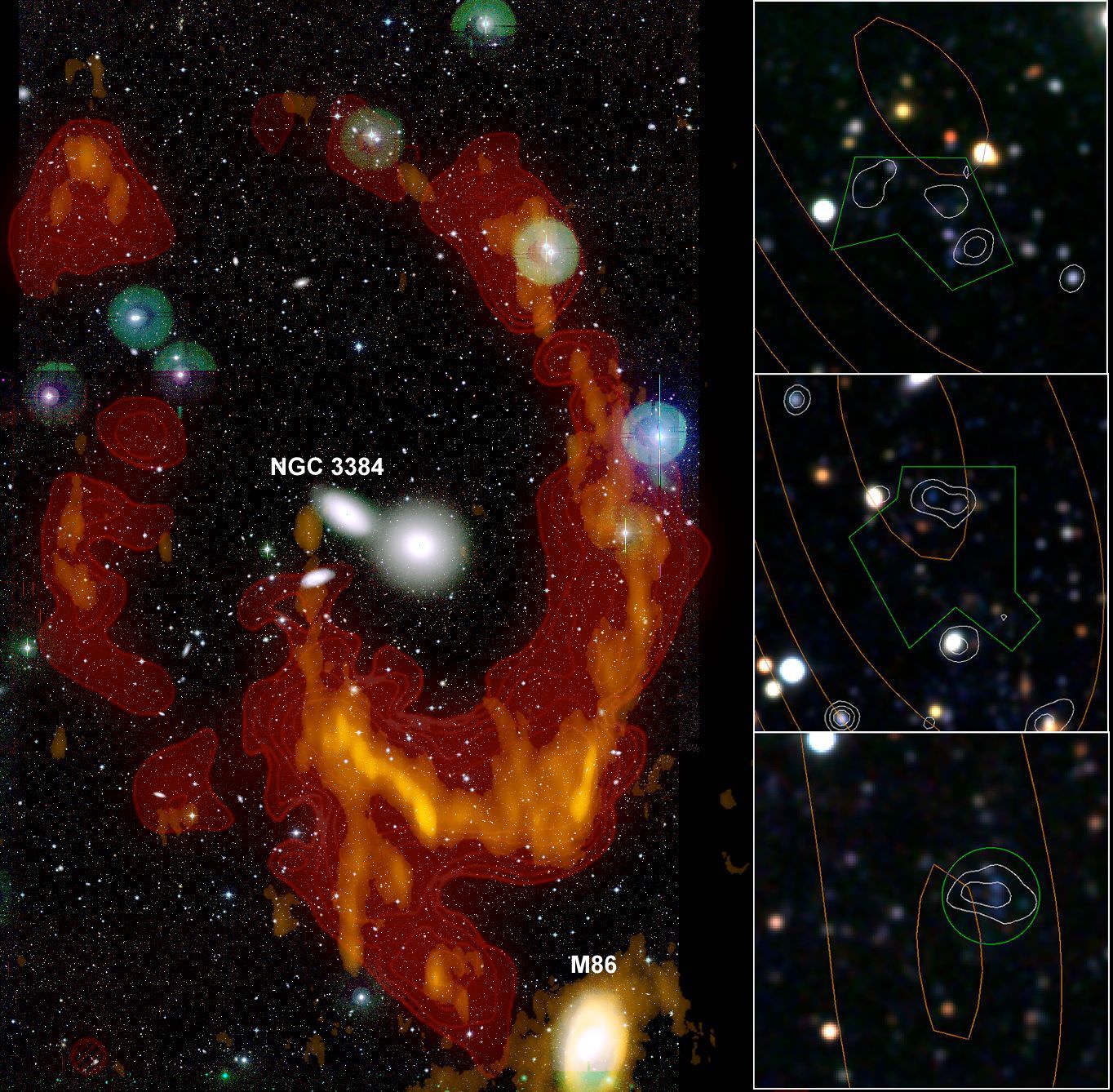[/caption]
From a Canada-France-Hawaii Telescope press release:
An international team unveiled the origin of the giant gas ring in the Leo group of galaxies. With the Canada-France-Hawaii Telescope, the scientists were able to detect an optical signature of the ring corresponding to star forming regions. This observation rules out the primordial nature of the gas, which is of galactic origin. Thanks to numerical simulations made at CEA, a scenario for the formation of this ring has been proposed: a violent collision between two galaxies, slightly more than one billion years ago. The results will be published in the Astrophysical Journal Letters.
In the current theories on galaxy formation, the accretion of cold primordial gas is a key-process in the early steps of galaxy growth. This primordial gas is characterized by two main features: it has never sojourned in any galaxy and it does not satisfy the conditions required to form stars. Is such an accretion process still ongoing in nearby galaxies? To answer the question, large sky surveys are undertaken attempting to detect the primordial gas.
The Leo ring, a giant ring of cold gas 650,000 light-years wide surrounding the galaxies of the Leo group, is one of the most dramatic and mysterious clouds of intergalactic gas. Since its discovery in the 80s, its origin and its nature were debated. Last year, studies of the metal abundances in the gas led to the belief that the ring was made of this famous primordial gas.
Thanks to the sensitivity of the Canada-France-Hawaii Telescope MegaCam camera, the international team observed for the first time the optical counterpart of the densest regions of the ring, in visible light instead of radio waves. Emitted by massive young stars, this light points to the fact that the ring gas is able to form stars.
A ring of gas and stars surrounding a galaxy immediately suggests another kind of ring: a so-called collisional ring, formed when two galaxies collide. Such a ring is seen in the famous Cartwheel galaxy. Would the Leo ring be a collisional ring too?
In order to secure this hypothesis, the team used numerical simulations (performed on supercomputers at CEA) to demonstrate that the ring was indeed the result of a giant collision between two galaxies more than 38 million light-years apart: at the time of the collision, the disk of gas of one of the galaxies is blown away and will eventually form a ring outside of the galaxy. The simulations allowed the identification of the two galaxies which collided: NGC 3384, one of the galaxies at the center of the Leo group, and M96, a massive spiral galaxy at the periphery of the group. They also gave the date of the collision: more than a billion years ago!
The gas in the Leo ring is definitely not primordial. The hunt for primordial gas is still open!
 Universe Today
Universe Today
